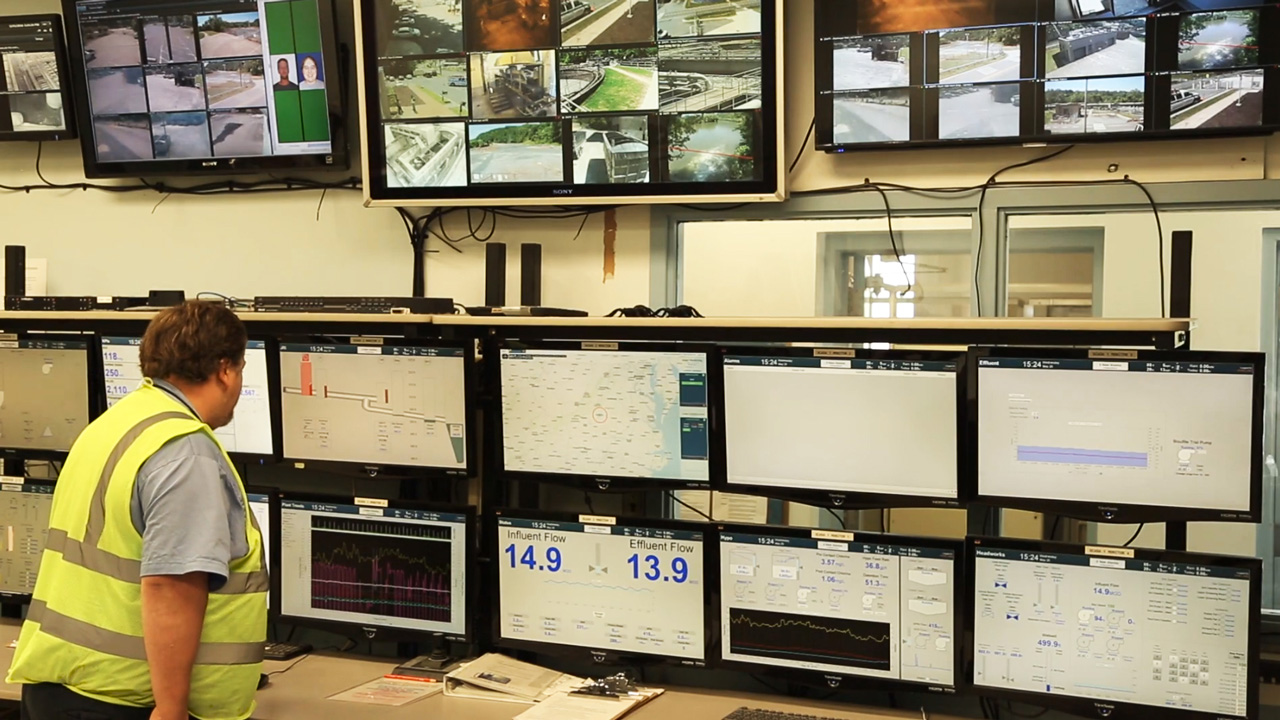ApplicationsMarch 28, 2019
Utility deploys SCADA solution for water management systems

Two older water utility systems had become increasingly difficult to maintain, and upgrade with connections to new PLCs. There wasn't enough data or automation for the department to operate efficiently, so the utility looked to a new SCADA software platform to provide solutions for a wide variety of projects.
The Department of Water Resources in Lynchburg, Virginia (USA) is tasked with providing water, waste water, and storm water service to the community. Previously, the department had two SCADA systems, which were becoming increasingly difficult to maintain. But there were problems with upgrading and connecting to new PLCs. There wasn’t enough data or automation for the department to operate as efficiently as it wanted to.
Moving to the Ignition software platform from Inductive Automation solved these problems and created new opportunities. The Department of Water Resources now uses the new platform in a variety of ways, seeing numerous benefits.
“Ignition is our engine of innovation. There’s nothing I haven’t been able to do with it,” said Jason R. Hamlin, plant instrumentation technician for the department. “One of the powers that I haven’t seen in other platforms is a versatility of unlimited projects. It gives us the ability to do much more than just SCADA.”
Comprehensive view
With the new solution, data flows throughout the enterprise, from the plant floor to the executive level, even via mobile devices. Operators now have a holistic view of the plant, so they can better understand what’s happening throughout the facility. Operators get advance warnings on overflow events, and the department sees time savings and other efficiencies on a daily basis.
Timothy A. Mitchell, director of the department, gets data on his cellphone in making decisions. “It’s an effective tool in our planning, as well as in our day-to-day operations,” he said. “We can use the data to make decisions about allocating resources — whether personnel or money or whatever the case may be. Having the data helps us save money, improve our response times, and improve overall operations.”
The system’s mobile capabilities are a big plus. “Before, we’d need a human resource to give me information that now I can get instantly on my phone,” said Mitchell. “This technology really frees up resources, provides information quickly, and is the answer to being a more efficient operation going forward.”
The department built numerous screens to track a variety of processes.
According to Elizabeth Jensen Plant Shift Supervisor, Dept. of Water Resources, for the plant in Lynchburg, “we can adjust the levels of our various pumps with the touch of a button. It’s so much easier than when we had to run all over the plant to do small adjustments.”
Variety of projects
The department has ten active projects:
- SCADA for the main plant
- SCADA for the dewatering process
- Status board
- Maintenance view
- Alarm notification beyond control room
- Admin monitoring of combined sewer overflow (CSO) events
- Data entry to database
- Mobile applications and reporting of real-time data and key performance indicators (KPI) for admin-level staff
Hamlin is enthusiastic about new projects. “We’ve moved forward with our KPI dashboard project, and have three new health/ status dashboards for 2017. They will each contain data specific to their area — operations, lab, and administrative — and will be solely driven by SQL calculations. We’re also moving forward on our public CSO notification project. And we’re working on interfacing with the third-party notification software the City uses for emergency alerts.”
City employees are often surprised at what the new systems can do. One example is data entry performed by admin staff, who had been doing the work in Microsoft Access. The department works with a third-party company that provides remote monitoring devices, which talk to SQL.
“We wanted to put this on our SCADA system, and the guys there said we could have access to their SQL Server,” Hamlin said. “They saw it working and said, ‘This is amazing. How did you do this through your SCADA system?’ It’s something we could never have done in any of the other platforms.”
High performance
Hamlin really likes high-performance graphics (HPG). When he introduced the concept of HPG, some operators were a bit skeptical — but that didn’t last long. “Once we showed them a side-by-side of what high-performance looked like, they embraced it,” said Hamlin.
Operators also appreciate time savings. “We have more of our pumps attached to Ignition than we did with the previous system,” said Jensen, plant shift supervisor for the department. “So we can adjust the levels of our various pumps with the touch of a button. It’s so much easier than when we had to run all over the plant to do small adjustments.”

